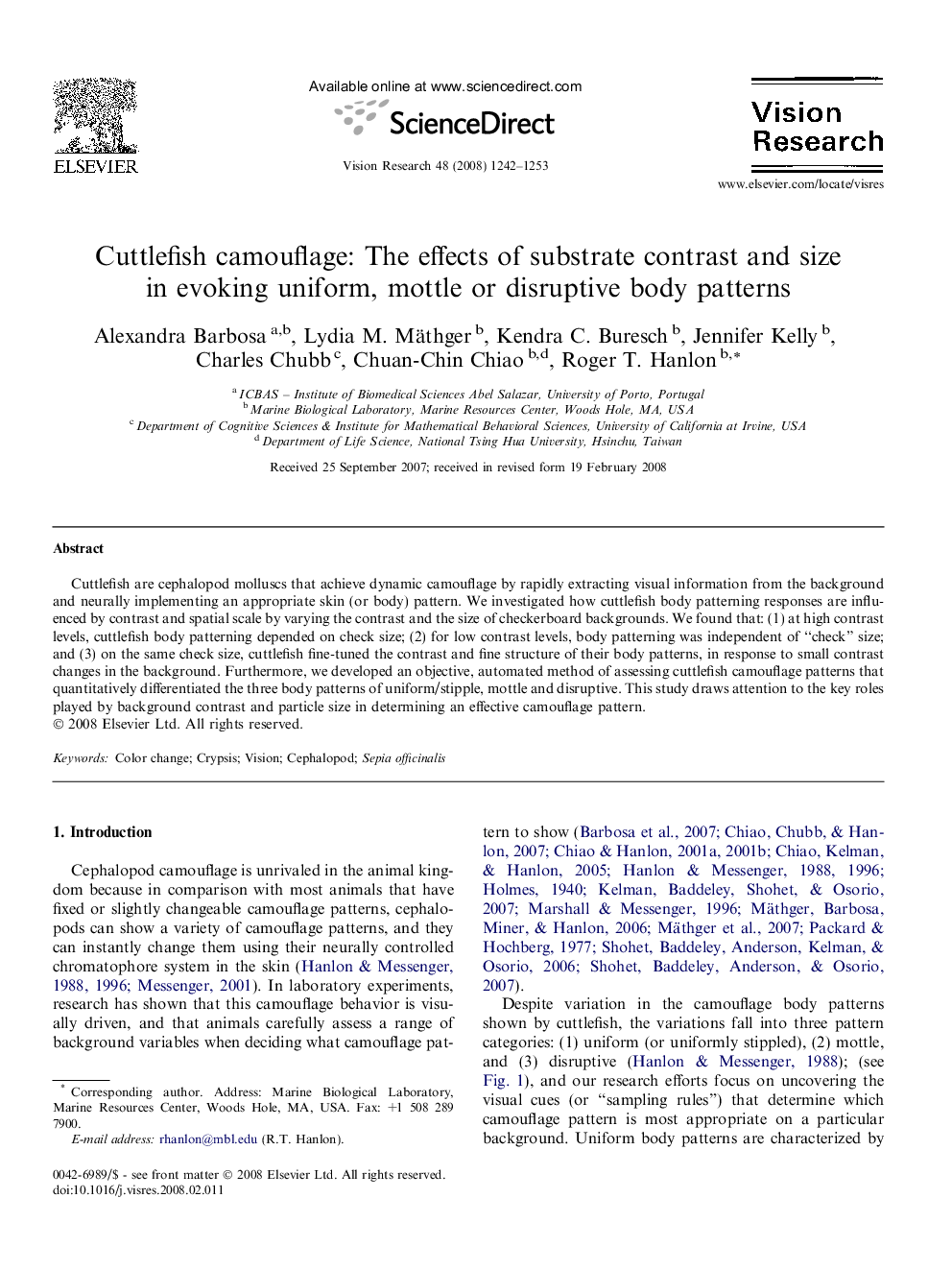| Article ID | Journal | Published Year | Pages | File Type |
|---|---|---|---|---|
| 4035241 | Vision Research | 2008 | 12 Pages |
Cuttlefish are cephalopod molluscs that achieve dynamic camouflage by rapidly extracting visual information from the background and neurally implementing an appropriate skin (or body) pattern. We investigated how cuttlefish body patterning responses are influenced by contrast and spatial scale by varying the contrast and the size of checkerboard backgrounds. We found that: (1) at high contrast levels, cuttlefish body patterning depended on check size; (2) for low contrast levels, body patterning was independent of “check” size; and (3) on the same check size, cuttlefish fine-tuned the contrast and fine structure of their body patterns, in response to small contrast changes in the background. Furthermore, we developed an objective, automated method of assessing cuttlefish camouflage patterns that quantitatively differentiated the three body patterns of uniform/stipple, mottle and disruptive. This study draws attention to the key roles played by background contrast and particle size in determining an effective camouflage pattern.
